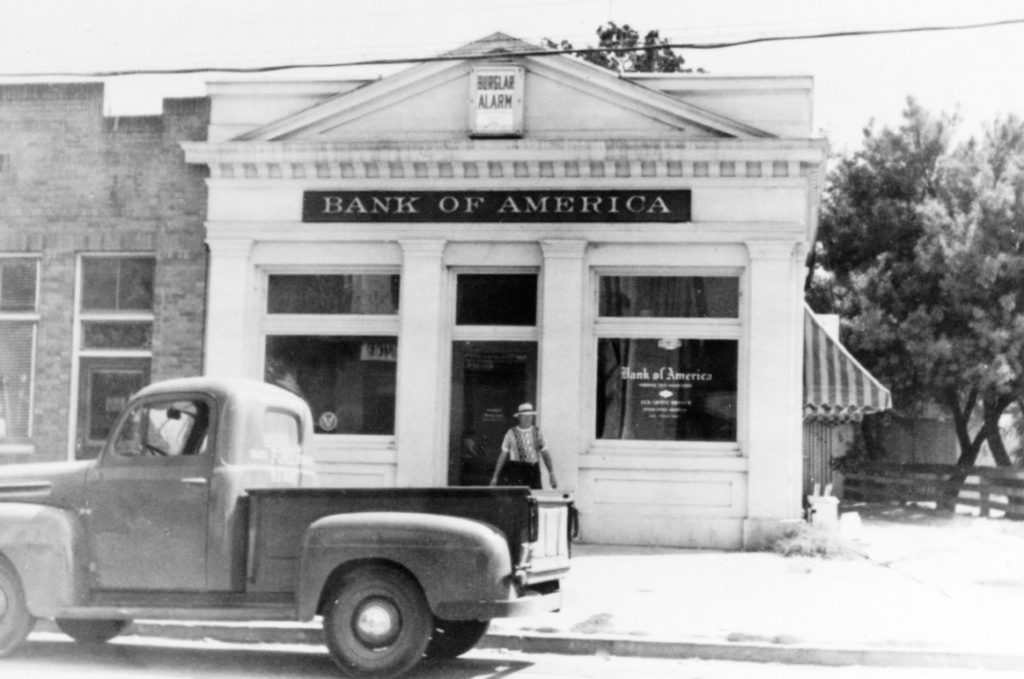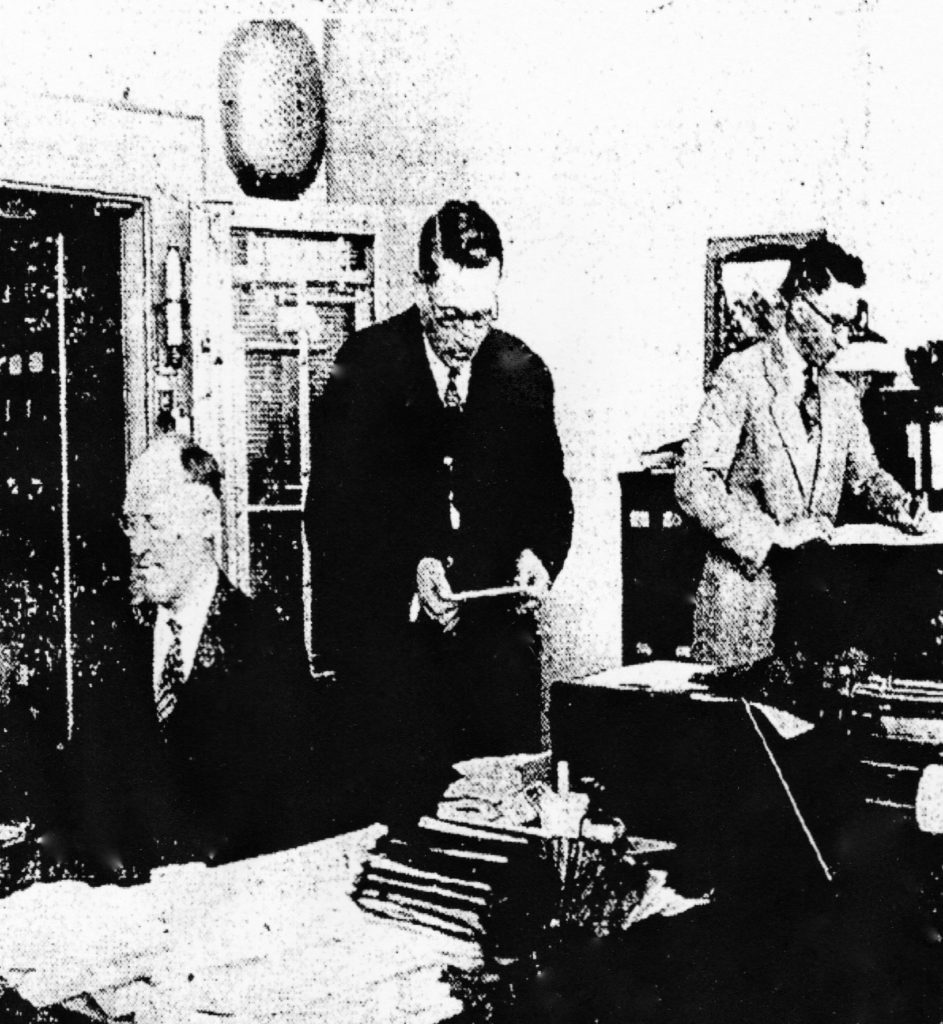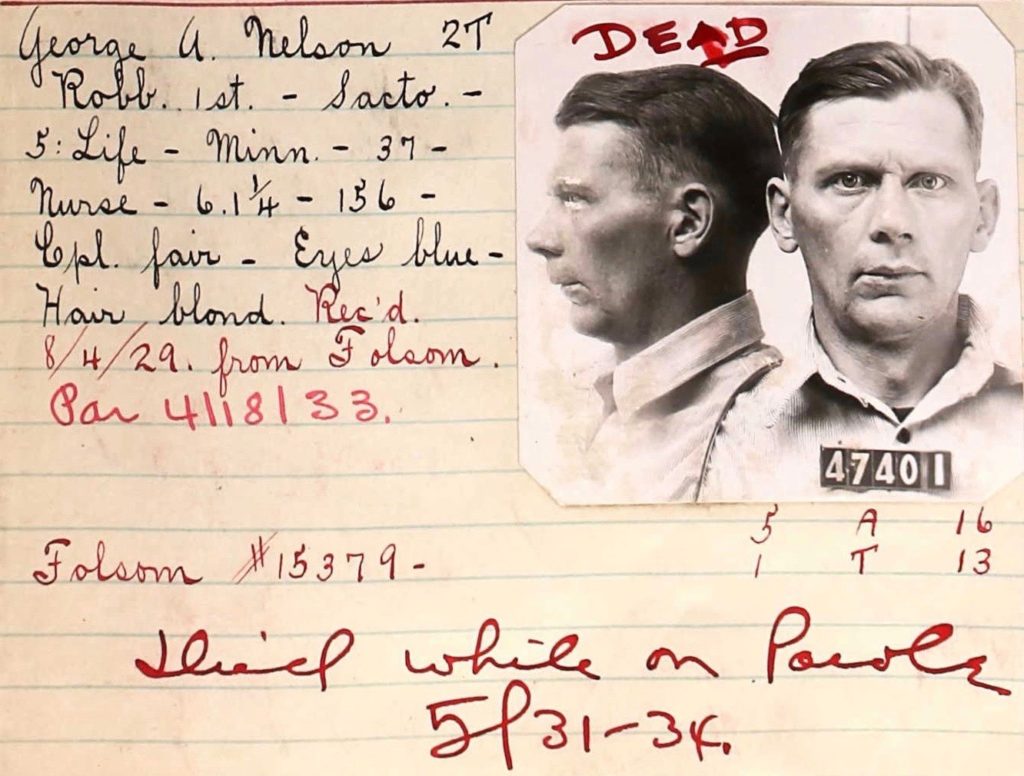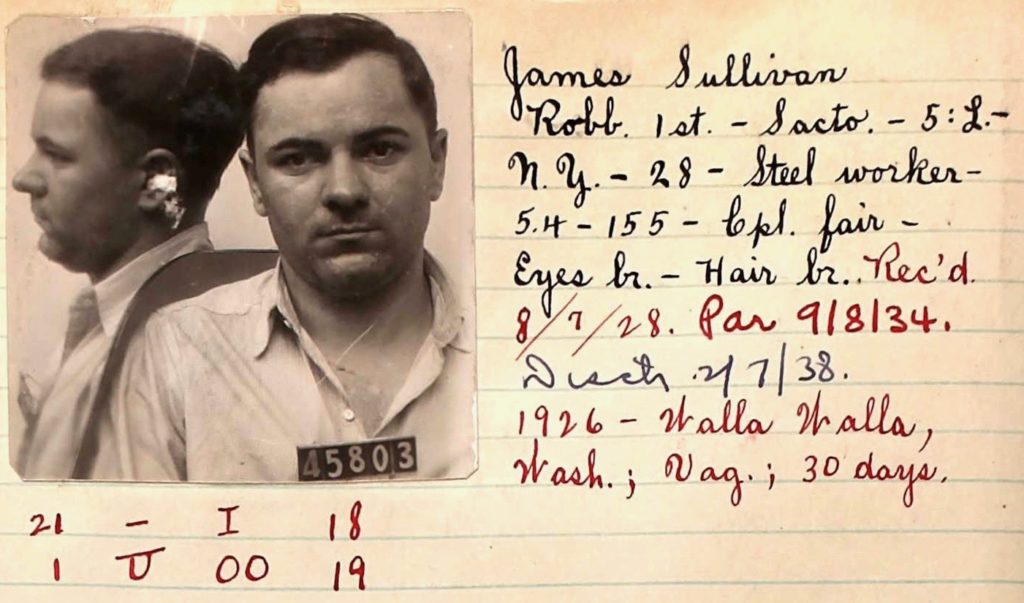On Friday, February 16, 1928 the Elk Grove Branch of the Security Bank and Trust was robbed of $8,200 by two masked bandits brandishing weapons. It was the second robbery in three days. The first was Bank of Courtland on Tuesday, February 12th and bandits got away with $10,000. The following information describing the events came from a combination of the Sacramento Bee and the Sacramento Union newspapers in 1928.

Photo (circa 1950): The Bank of Elk Grove was built in 1910 and was sold to the Bank of Italy in 1928 and within a year bought by Bank of America. It is located just east of the railroad tracks on Elk Grove Boulevard, known then as Main Street. It is still in existence, but not used as a bank anymore.
Confident that the thugs were the same who looted the Bank of Courtland of $10,000 on Tuesday, Sherriff Ellis Jones yesterday took command of the pursuit.
Brandishing revolvers, and with faces partly covered by handkerchiefs, two bandits forced three employees and three customers in the Elk Grove bank into a back room off the lobby, looted cash drawers and vault for $8,200.00 and escaped in a waiting automobile.
Charles H. Copper, manager of the bank, George Tavernar, member of the board of directors, and William Smith, teller were first taken behind one of the bank cages, where Tavernar was forced to turn over the keys to the cash drawer. One of the bandits began scooping up the currency and gold while the other guarded the employees and three clients, Mrs. Raymond Baker, Davis Coons, and Frank Downing.

Photo (Feb 16, 1928): Left to right: Charles H. Cooper, manager; George W. Tavernar and William Smith , tellers
The entire transaction was carried out with military precision as the bandits leisurely conversed with bank employees, explaining the object of the robbery and demanding the keys to the vault.
The bandits were roughly dressed, described as mechanics’ greasy coveralls, and went about their outlined task within while a third member of the group waited outside in a running vehicle.
Officers have a good description of the thugs, and are certain that the men are experienced criminals. Because of the daring manner in which the thugs have staged the robberies, officers have been warned by their superiors to be prepared for a gun battle in event the stumble on to the bandits hiding place.
As the man with the canvas money-sack hurried toward the door, the other followed, without a word to the six held under cover, and both men leaped into a waiting automobile parked in front of the entrance with the motor running.
The bandits turned their car around at the corner, retuned to pick up the look out and drove toward the Elk Grove picnic grounds, where a fourth member at the wheel of a bigger car prepared for the final escape.
Soon after the bandit departed, Coons and Downing followed and told authorities they arrived within distance of seeing the bandits change cars. The pursuers’ machine ran out of gas at that point, and were unable to continue the pursuit. They said they stood by to notice two of the men apparently changing clothes in the rear seat if the fleeing car.
Sherriff Ellis Jones and deputy Sherriff Charles Ogle and Jess hurried to the scene of the holdup and scoured the district the men were to drive over, while telephone appeal was sent to Stockton and nearby towns to head off the fugitives.

The mud-spattered Hudson Sedan bearing a foreign license plate only in the front that was used in the holdup was stolen from Seventh and G Streets, Sacramento, and registered to W.H. Beskeen, 170 Redding Avenue, was abandoned by the three, who entered the planted machine.
Officials of the police department and sheriffs office are strong in the belief that the fugitives have their lair in Sacramento, from which hideaway they steal out to prey upon their victims, and then cleverly evading pursuit of the posse, enter the city again by round about way and go into hiding until the heat of the chase dies down.
Description of the robbers were…
No.1 – Weight 145 lbs., height 5’5; age 32-33; complexion dark; medium build, bushy eyebrows. Dressed in a dark brown suit and gray hat. This bandit did all the talking during the robbery. His manner was cool.

No.2 – Weight 145 lbs., Height 6’ 1”; age 25-27; slender build; light complexion. Dressed in light suit and gray hat. Seemed very nervous.

No.3 – Remained at the wheel of a car parked at the curb in front of the bank and employees were unable to get a description of the individual. The driver seemed very tall and light completion with blonde hair and slouched with a hat.
The capture and sentencing…
Four months later in June 6, 1928 ex-convicts George F. Nelson and James Sullivan were arrested in Phoenix, Arizona on drug charges. After searching their car and belongings they found fliers of the description of the Courtland robbery suspects. They then contacted the Sacramento police and they were arraigned in Sacramento on June 15th. They were convicted on July 28th after seven minutes of deliberation and sentenced to 5 years to life for the robbery.
They were sentenced only for the Courtland robbery because they didn’t wear any masks and were easily identified by employees, but in the Elk Grove robbery they wore masks and staff were confused with certainty on identification.
In Phoenix they were found with two women, but there are no records as to what happened to them or any other robbers, begging the question that the other assailants may have been the women?
It was found later that three robbers had first entered the Walnut Grove Bank at 10:30 and were there until 2:30, but because of the large crowds of patrons they finally gave up and at 2:40 they held up the Courtland bank just before it closed. Two men came in while a third waited in a running car. As they fled they were shot at four times and all missed.
FYI – The Elk Grove Bank of America was held up again, six years later in 1934, but that is another story.